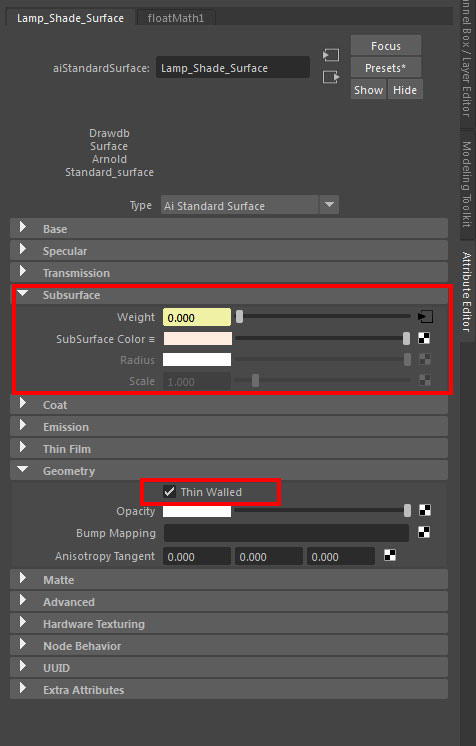Software:
Maya 2018 | Arnold 5

The Arnold Standard Surface Shader’s Transmission Scattering options can be used for simulating highly realistic volumetrically ray-traced sub-surface-scattering suitable for materials like wax, soap, milk etc.
While the Transmission Depth attribute controls volumetric light absorption within the object (fog), the Scatter attribute controls what percentage of the light will be scattered instead of absorbed, effectively creating the murky effect of semi-transparent materials.
Note that for the scattering effect to work Scatter must have a dominant percentage value, and the Depth attribute must generally be much lower (shallower) than what would create coloring without scattering, otherwise the object will continue to look transparent and lacking the internal substance that we want to simulate.
Also note that the Opaque attribute must be unchecked in the Arnold attributes of the object’s shape node for the light to be able to pass into the mesh and illuminate the volume.
*This is actually a “cheat”, because physical semi-transparency has to be simulated by indirect light calculation or caustics, but for dense volumes like wax it’s very effective and the loss of realism is insignificant.


You can simulate the effect more accurately by rendering caustics,
In that case the Opaque attribute in the Arnold attributes of the object’s shape node must be checked and more steps must be taken allow refractive caustics to be ray-traced.
Note that simulating the effect using caustics will be very demanding in Transmission samples and Ray Depth.

Related:
> Understanding Transparency Render Settings
> Arnold Translucency
> Arnold Refractive Caustics









